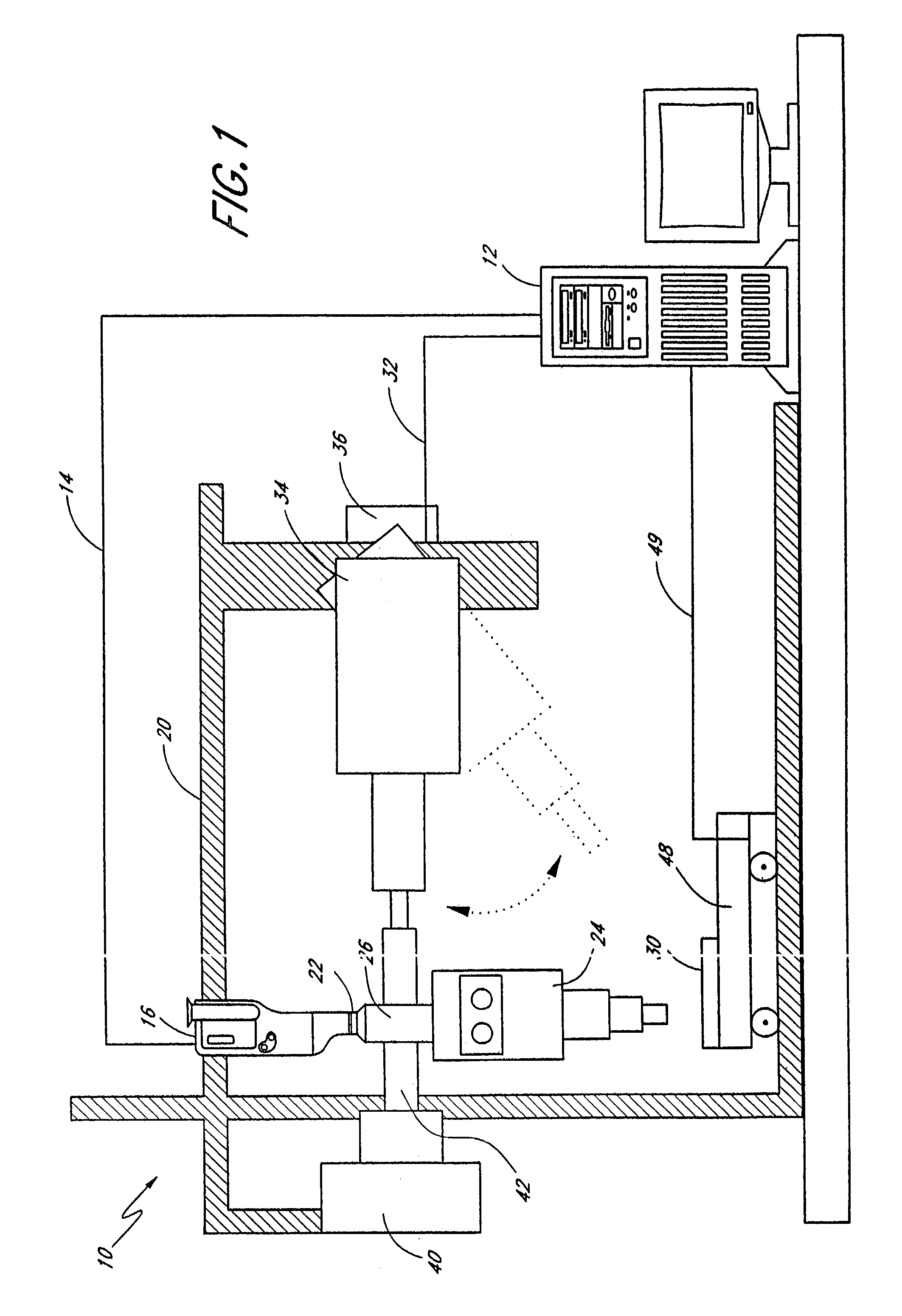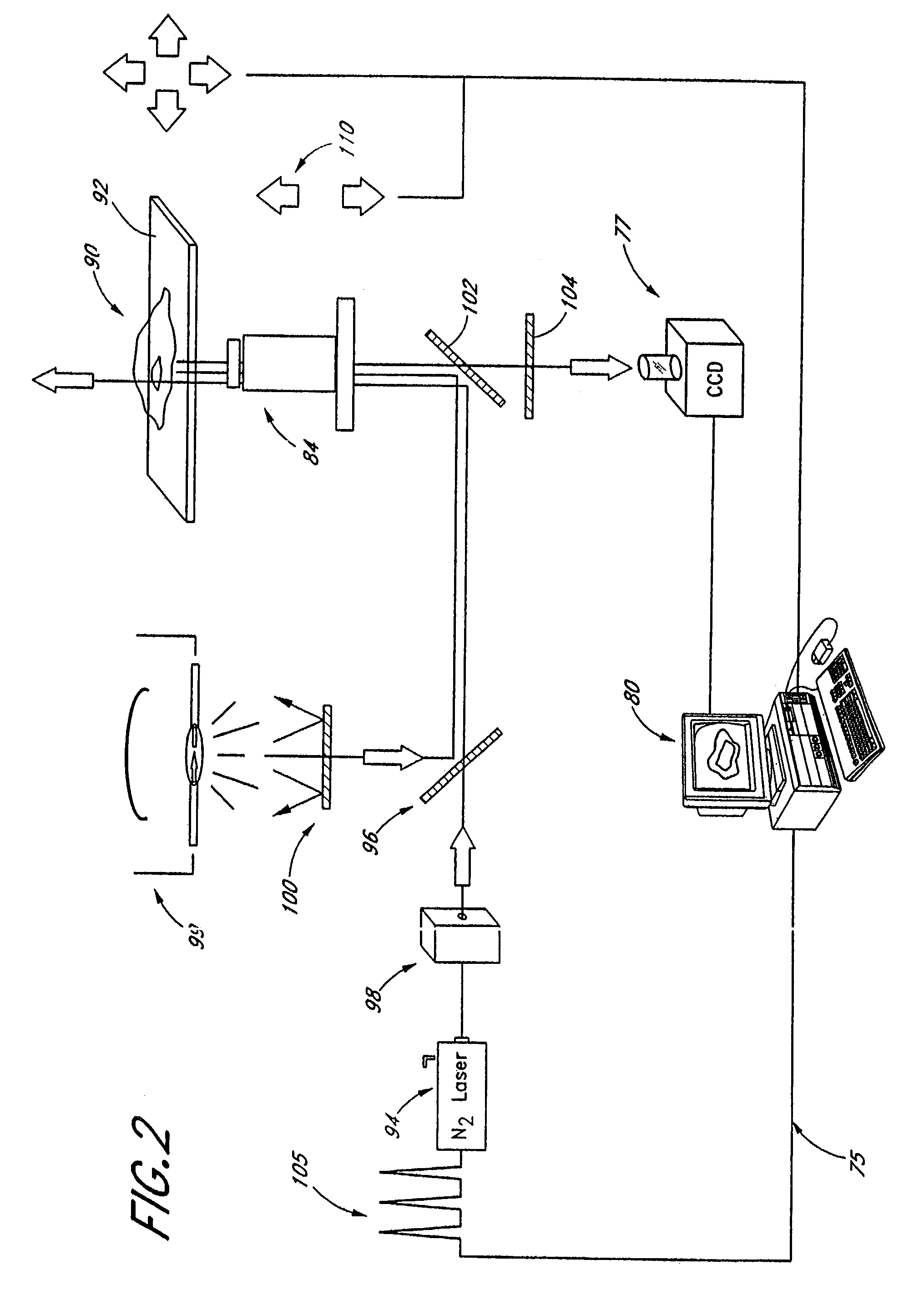Targeted system for removing tumor cells from cell populations
a tumor cell and cell population technology, applied in the field of tumor cell removal target system, can solve the problems of high probability, tumor cells will contaminate the harvested hematopoietic cell population, and destroy their hematopoietic cells,
- Summary
- Abstract
- Description
- Claims
- Application Information
AI Technical Summary
Benefits of technology
Problems solved by technology
Method used
Image
Examples
example 1
Hematopoietic Stem Cell Transplantation
[0071]A patient with a metastatic tumor and in need of an autologous bone marrow transplant is identified by a physician. As a first step in the treatment, the patient undergoes a bone marrow harvesting procedure. In this procedure, the patient is placed under general anesthesia in an operating room. The patient's posterior iliac crest is then punctured multiple times by the surgeon and the bone marrow is aspirated.
[0072]The harvesting procedure results in retrieval of approximately 1×109 hematopoietic cells. The harvested cells are enriched for hematopoietic cells by being first run over an immunoaffinity column that selects for cells having the CD34 hematopoietic cell-specific surface antigen. To enrich the harvested cell population even further for stem cells, a second selection is performed by running the harvested cells over an immunoaffinity column that is bound with the anti-stem cell antibody, Thy-1.
[0073]After conventional elution from...
example 2
[0077]An experiment was performed to determine if Propidium Iodide (PI) could be used to confirm that a target cell, in a population of cells, was killed by laser treatment. As is known in the art, Propidium iodide is specific to double-stranded nucleic acids. Since PI can diffuse into the nucleus of dead cell, but can not penetrate the membrane of viable cell, we tested whether viability of target cells could be confirmed by PI color development in their nuclei.
[0078]Additionally, PI has an absorbance peak at 493 nm, which is close to the absorbance peak of the label phycoerythrin (PE) at 480 nm. Thus, the PI and PE could be activated by the same wavelength of light. In addition, PI has an emission peak of 617 nm, which was far enough to distinguish it from that of PE at 578 nm. Thus, a positive PE reading could be distinguished even when PE-labeled antibodies were bound to the cell
Cell Line
[0079]The human hematopoietic cell line KG1a was obtained from the American Type Culture Col...
PUM
 Login to View More
Login to View More Abstract
Description
Claims
Application Information
 Login to View More
Login to View More - R&D
- Intellectual Property
- Life Sciences
- Materials
- Tech Scout
- Unparalleled Data Quality
- Higher Quality Content
- 60% Fewer Hallucinations
Browse by: Latest US Patents, China's latest patents, Technical Efficacy Thesaurus, Application Domain, Technology Topic, Popular Technical Reports.
© 2025 PatSnap. All rights reserved.Legal|Privacy policy|Modern Slavery Act Transparency Statement|Sitemap|About US| Contact US: help@patsnap.com


